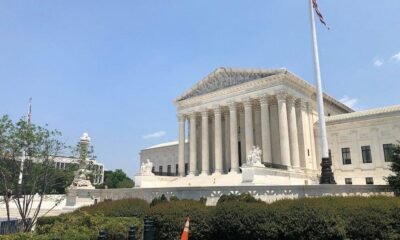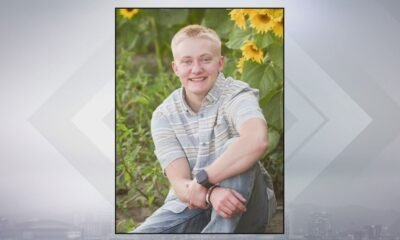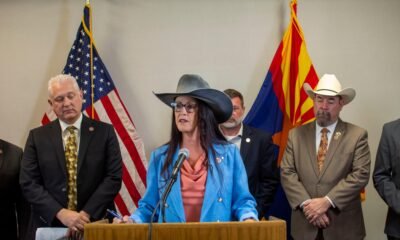Business
Nurse Practitioners Step Up as Geriatrician Numbers Decline in Elder Care

Stephanie Johnson, a nurse practitioner in Seattle, juggles a demanding schedule every Friday, visiting eight patients in their homes. Expecting her second child, she carries a backpack filled with medical essentials, including a stethoscope and blood pressure cuff, instead of the traditional bag.
During one cold January visit, she met with Ellen, a nonagenarian navigating severe health issues. KFF Health News has opted not to disclose Ellen’s last name for privacy reasons. As she entered Ellen’s dimly lit room, Johnson greeted her, checking in on her pain levels while the television blared in the background.
“It’s fine, except this cough I’ve had since junior high,” Ellen replied, revealing her long-standing condition. With a history of vascular dementia, peripheral vascular disease, and Type 2 diabetes, Ellen faced myriad health challenges. A recent foot surgery further complicated her well-being, and her vibrant personality seemed to have faded.
Johnson carefully assessed Ellen’s health, examining her joints and listening to her heart. Upon inspecting Ellen’s bandaged toes, she noted the concerning coldness and redness in her lower legs. With Ellen’s sisters holding power of attorney, Johnson decided it was time to discuss hospice care, a sensitive but necessary conversation.
“Our patient isn’t just the older adult,” Johnson emphasized. “It’s also the family.” This dual focus is increasingly vital as the senior population swells and the shortage of geriatricians worsens. The Health Resources and Services Administration predicts a 50% rise in demand for geriatricians by 2030, coinciding with the aging of the baby boom generation.
Meanwhile, nurse practitioners like Johnson are stepping in to fill this gap. Since 2010, the number of nurse practitioners specializing in geriatrics has more than tripled, enhancing care for the aging population. A 2024 survey revealed that approximately 15% of the 431,000 licensed nurse practitioners are certified to treat older adults.
Operating a nurse practitioner-led private practice with her husband, Johnson aims to see around ten patients daily. Care often includes visits to housebound seniors, a demographic she believes is underserved.
Laura Wagner, a nursing professor at UC-San Francisco, highlighted the unique role of nurse practitioners. “We’re filling gaps where other providers might not,” she said. Nurse practitioners, unlike physicians, can often see patients directly while also prescribing medication and analyzing diagnostic tests.
However, barriers remain. While 27 states, along with Washington, D.C., allow nurse practitioners to practice independently, many others require collaborative agreements. Although Medicare reimburses nurse practitioners at only 85% of what it pays physicians, recent studies have indicated that care led by nurse practitioners can result in positive patient outcomes.
In 2021, five states expanded nurse practitioners’ authority, with Utah being the latest. However, proposed independence measures, such as Mississippi House Bill 849, faced resistance and failed to pass.
After years of collaboration with physicians, Johnson now treats patients independently, streamlining their medication regimens and ensuring effective communication with families regarding care changes. “We are stronger in care coordination and patient education,” noted Elizabeth White, a health policy professor at Brown University.
As the U.S. population ages — projections show that 23% will be over 65 in 30 years — the role of nurse practitioners will become increasingly vital. Following her recommendation for hospice care, Johnson communicated the news to Ellen’s family, ensuring that they were prepared for what lay ahead.
“She was accurate,” said Ellen’s sister, Margaret Watt, appreciating Johnson’s communication throughout Ellen’s declining health. Tragically, a month later, Ellen passed away peacefully in her sleep.
Reflecting on her experience, Johnson expressed both sorrow and relief, knowing she had supported Ellen through her suffering and aligned with her family’s priorities during a challenging time.


















